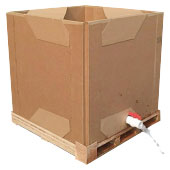Intermediate Bulk Container (IBC) liner bags are an increasingly popular solution for protecting and transporting liquids, powders, and semi-solid products. As an expert who has worked with IBC packaging for years, I can confirm that a properly selected and well-manufactured liner bag saves time, improves hygiene, and reduces logistics costs.
Below, I will explain what these bags are made of, where they are used, how to choose the right type, and why modern bag making machines play a vital role in their quality and performance.


IBC liner bags are typically made from food-grade polyethylene (PE), multi-layer co-extruded films, or aluminum foil laminates, depending on the product being stored.
Polyethylene (PE): The most common material, flexible and economical, suitable for water-based liquids, syrups, and some powders.
EVOH or Nylon Barrier Films: Provide extra oxygen and moisture barrier for sensitive food products such as dairy or fruit concentrates.
Aluminum Foil Laminates: Offer the highest level of barrier protection against light, oxygen, and moisture, commonly used for chemicals, pharmaceutical intermediates, or high-value food ingredients.
Each liner is heat-sealed to form a leak-proof structure, ensuring product integrity during filling, transport, and discharge.
IBC liner bags are used wherever bulk liquids or powders need safe, contamination-free handling:
1. Food & Beverage: Dairy, edible oils, fruit juice concentrates, sauces, syrups, and flavorings.
2. Pharmaceuticals & Cosmetics: APIs, creams, gels, and other formulations that must remain pure.
3. Chemicals & Coatings: Water-based paints, inks, resins, lubricants, and hazardous chemicals.
4. Agriculture: Fertilizers, pesticides, and animal nutrition products.
Because the liner acts as a disposable inner container, there is no need for washing and drying the IBC tote between uses, which is especially important in hygiene-sensitive industries.
Most IBC liner bags are designed for single use, which ensures the highest hygiene standard and eliminates cross-contamination risk. After emptying, the liner is simply removed and disposed of according to local waste regulations, saving water and labor compared with washing rigid IBCs.
However, in some non-food applications, thicker liners may be reused if they remain undamaged, but this practice requires careful inspection to avoid leaks or contamination. For companies looking to reduce environmental impact, many suppliers now offer recyclable or biodegradable liner materials, aligning with circular economy initiatives.
ML-1300 IBC Liner Bag Intelligent Bag Making Machine
The quality of an IBC liner bag depends heavily on the precision of the bag making machine used in its production. Modern machines are designed to achieve:
Consistent Sealing Strength: Automated heat-sealing controls ensure every weld is uniform, preventing leaks.
Dimensional Accuracy: Computer-controlled cutting maintains exact length, width, and fit for standard 1000L or 1200L IBCs.
High Production Efficiency: Servo-driven systems enable faster throughput, reducing lead times for bulk orders.
Quality Traceability: Integrated inspection systems detect defects early, guaranteeing a lower rejection rate.
Manufacturers who invest in advanced bag making equipment can offer customers reliable liners that meet FDA, EU, and UN safety requirements.
Selecting the correct liner is key to protecting product quality. Here is a practical approach:
1. Check Product Compatibility: Consider pH, viscosity, temperature, and whether your product is oxygen-sensitive.
2. Select the Right Barrier Material: Choose PE for standard use, EVOH/Nylon for oxygen barrier, or aluminum foil for high-sensitivity products.
3. Consider Discharge Method: Decide between bottom-discharge, top-discharge, or form-fit liners based on your filling equipment.
4. Evaluate Certification Requirements: Ensure the liner meets food-grade, UN hazardous material, or pharmaceutical GMP standards if required.
5. Work with a Trusted Supplier: A supplier with modern production lines and strict quality control will minimize risk.
The future of IBC liner bag production lies in automation and smart manufacturing. New machines integrate:
Real-time Quality Monitoring: Cameras and sensors inspect every seal and film layer, reducing waste.
Energy-Efficient Heating Systems: Lower energy consumption while maintaining precise sealing temperatures.
Flexibility for Custom Orders: Quick changeover systems allow small-batch production of different liner sizes and materials.
IoT Connectivity: Production data can be tracked and shared, improving transparency and supply chain reliability.
These advances will help producers deliver safer, greener, and more cost-effective packaging solutions to customers worldwide.